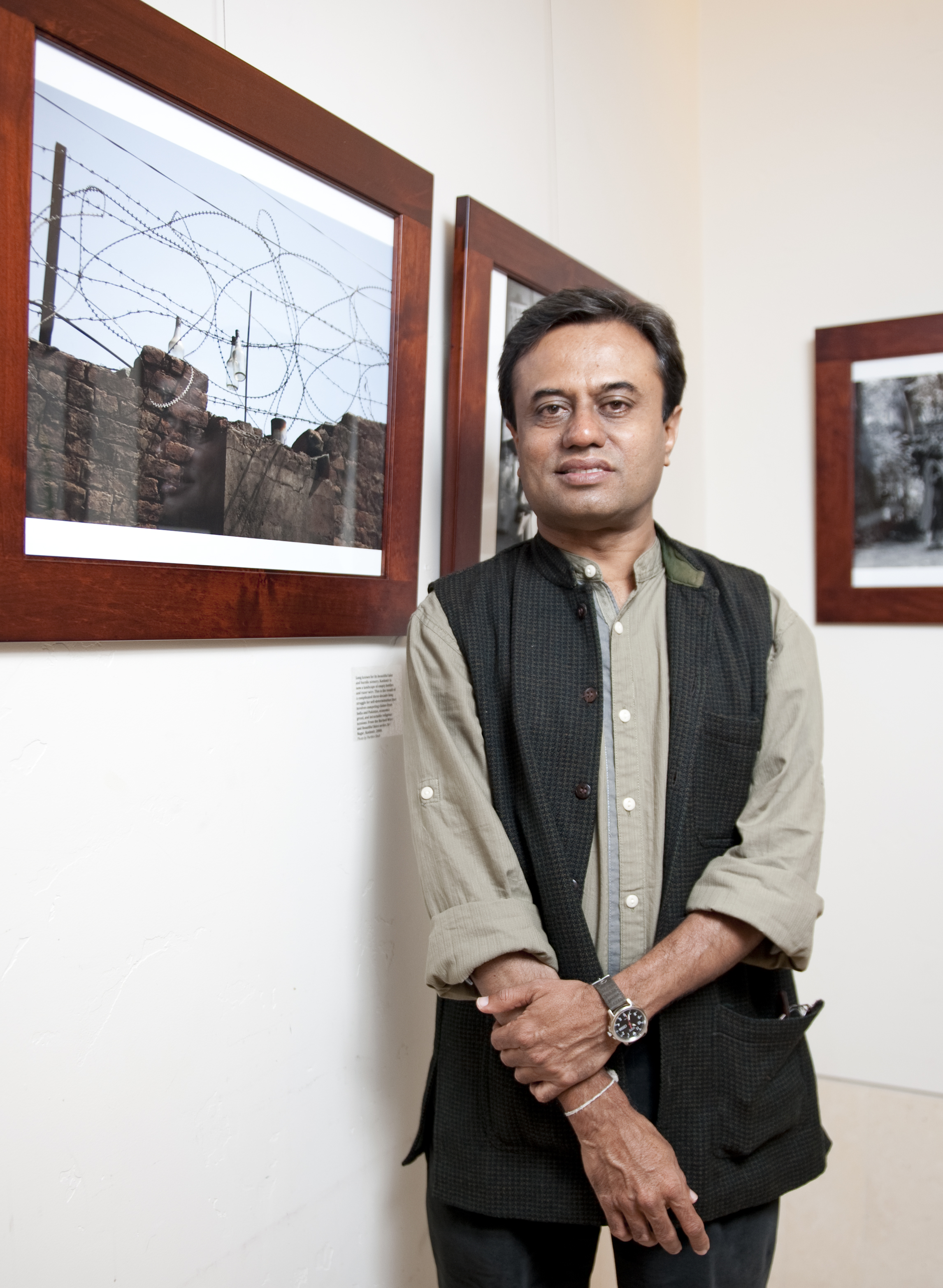A small girl beams at the camera, her eyes big and shiny, her short brown hair barely grazing her shoulders. The photo might be normal, passe even, if it weren’t for the fact that her small hands are clasping a heavy metal hammer and her entire face is smeared with black carbon dust.
Her name is Rubina, she is 9 years old, and she uses that hammer to break D-size batteries for a living in Bangladesh.
Often, words cannot recreate such images without stripping them of their visual power, but the UCLA community does not have to settle for a mere verbal description. The photograph of Rubina, among 17 others, will be on display in Glorya Kaufman Hall’s Rainbow Lounge for the rest of the fall quarter as part of the photo exhibition “Art as Witness,” which is based on Amnesty International India’s “Art for Activism” project.
The exhibition, which was originally shown in India, brings together the work of mostly South Asian photographers whose work confronts human rights issues, such as displacement, disappearance, imprisonment and inhumane working conditions.
The show was curated by Parthiv Shah, a designer, photographer and filmmaker currently teaching at UCLA on a Fulbright scholarship. The exhibition was organized by the Centre for Media and Alternative Communication, which Shah founded and currently directs in New Delhi. Some of Shah’s own work is also included in the show.
According to Shah, the exhibition includes both photographs with a greater attention to aesthetics, as well as more reportage-style images that would appear in a newspaper.
Shah said that while his own photographs are very graphic, they do not necessarily depict death or imprisonment because people tend to be more curious about images that have different styles.
“Otherwise, you get used to seeing certain kinds of images on the TV and in the newspaper and you become numb to that,” Shah said.
Elisabeth Millican, director of development at the Art | Global Health Center at UCLA, said that she has seen people who are walking past the collection halt in their tracks, drawn in by the images. She said Shah’s work, in spite of the different media he works with, has a common thread.
“He tends to always pick projects that are dealing with giving voice to marginalized people. He seems to start with a story or situation and captures that in his work through a complicated eye. He doesn’t present it in an easy way,” Millican said.
According to Shah, the idea behind this exhibition is to create an audience that goes beyond the people already committed to human rights issues, such as lawyers or activists.
Shah said that one of the reasons the exhibit was installed in the Rainbow Lounge was because many students tend to drink coffee and study there and would therefore be more likely to approach it in a casual way on their own time.
“I don’t think that films and photographs change people’s behavior immediately. It’s like when people are told “˜Don’t smoke’ or to plant a tree,” Shah said. “I think it has to be a slow process, where somewhere (later on) in your life it will affect you.”
While the exhibition may not provoke viewers to fly to Bangladesh to help children like Rubina, it is still a way of educating people about global human rights issues, according to Ivy Hurwit, a fourth-year world arts and cultures student and assistant producer at the Art | Global Health Center.
Shah said that viewers are often struck by the conflicting tone of Rubina’s photo, which was taken by Shehzad Noorani, a Bangladeshi photographer.
“A lot of people realize that she is doing child labor. She is being forced, so why is she smiling?” Shah said. “But that becomes part of life for a lot of people. They take it as it is and have to learn to be happy around it.”
According to Hurwit, each photo establishes an individual relationship that makes it difficult to move on to the next image.
“You feel connected to the person in the photo, and it lingers with you,” Hurwit said. “It’s impossible to look at this photo (of Rubina) and not remember her.”
